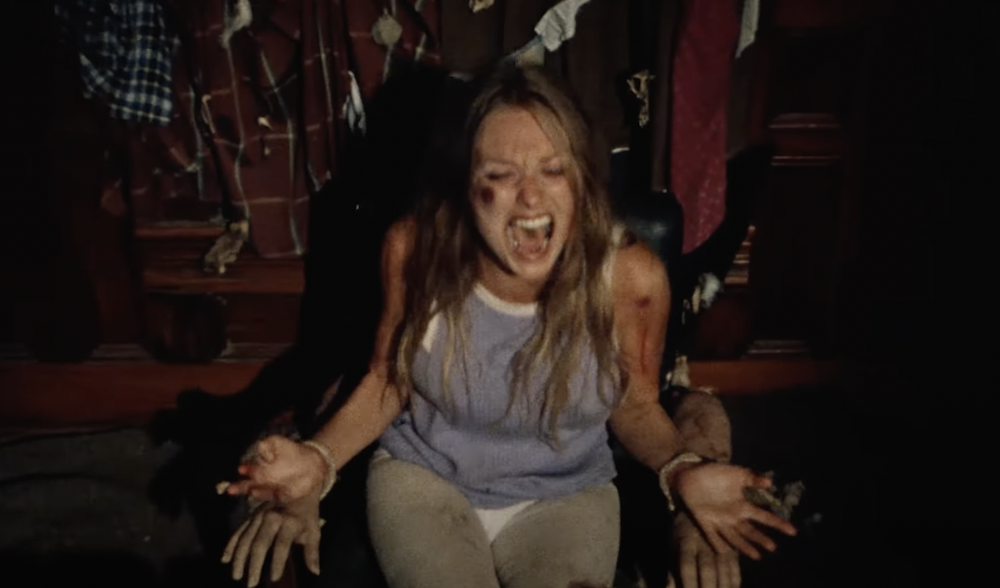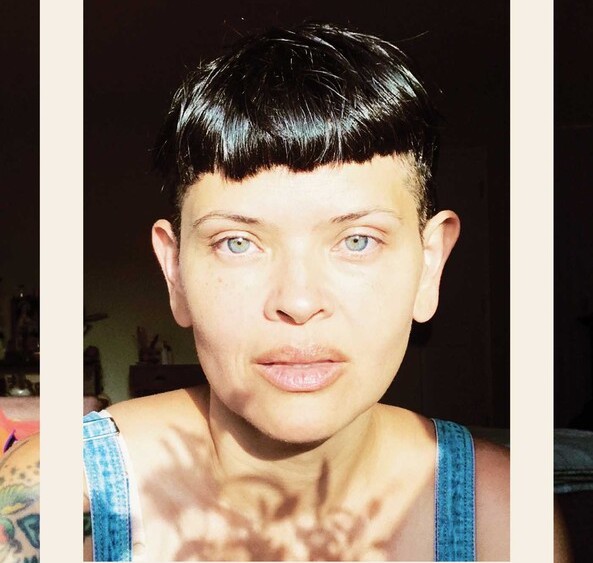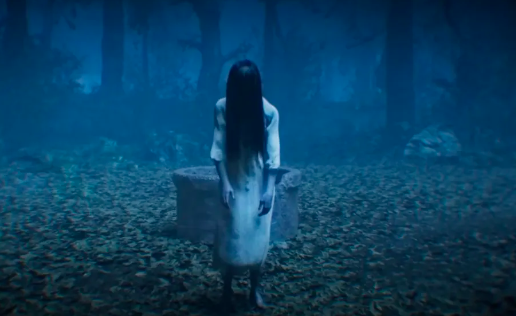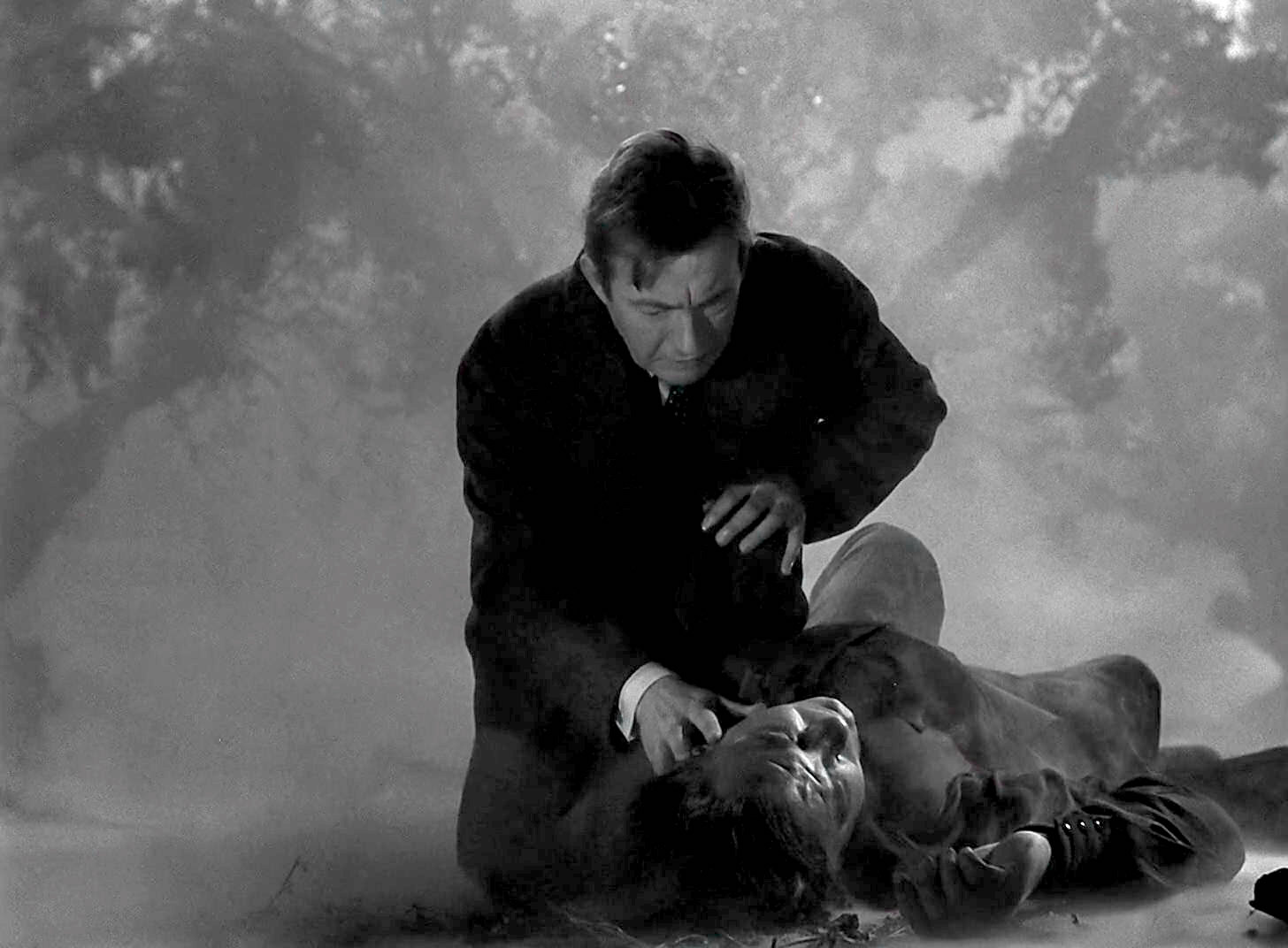Books & Culture
I Loved “Texas Chain Saw Massacre” Before I Loved Myself
With each rewatch, I got further from the me I was in high school and closer to my truest self

I have a set of cigarette burns zagging up my right arm. I don’t talk about them to friends—there are mainly two reasons you get burned in that particular way, and neither are good. They’re red and angry-looking, like wasps’ stings, and they’re right above my wrist which means I can’t hide them. The burns sit out in the open for everyone to see. I could say they’re beautiful, but there are some things that should never be recuperated. I will say the cigarette burns are stunning, though. As in: they stun. They stun others when they realize what they are, and they stunned me when I put the cigarette to my arm. They stunned the staff at the psych ward as they completed my intake paperwork. The anti-burn cream smeared onto my arm every morning stung when it touched me, and I’d wince as it was applied.
The Texas Chain Saw Massacre remake came out one day before the United Nations affirmed, for the third time, the importance of US troops in Iraq and the duty of the rest of the West to contribute to the war as well. On TV, commercials for the 2003 movie aired between those for dive-bombing jets, armed forces rappelling down a rock wall, desert fatigues. The film reflected all of that, MTV-style sheen slicked across the screen and dirty browns and tans running everywhere and gore filling every second. It opens with a hitchhiker who seems to have been sexually assaulted—blood running between her legs—blowing her brains out in the back of the main characters’ van. Then, the film escalates to a menacing sheriff licking his lips over her dead body with a necrophiliac longing. Watching the movie on Netflix years later with a friend I was fucking—a girl who whimpered during the scary parts, liked to be hit hard, and walked with me to get ice cream the first time we had sex—I shut it off after thirty minutes. I couldn’t bear any more.
I didn’t even think it was a unique misery: everyone hated their bodies, I thought.
Maybe I hated it so much because the original Texas Chain Saw Massacre, the one that came out almost exactly fifty years ago, is my most-loved movie. It’s not the one I often tell people is my most-loved: the title tends to turn people off. What they picture is something closer to the remake: a blunt object, a leering gaze, a body turned into an object to be fucked or cut up with nothing in-between. Instead, for the longest time, I’d tell people I loved art-house films most: the movies of Apitchatpong Weerasutakhul or Ingmar Bergman or Terrence Malick or any other director who specialized in long, winding, thoughtful shots and barely restrained emotions. And I do love those films. But of all the movies I’ve seen, I’ve seen Chain Saw the most—a revving engine of a film, sick and quick and all deep reds.
This is how it worked: first I loved it, and then I loved myself.
I first watched The Texas Chain Saw Massacre in high school during the brief window when full movies were first uploaded to YouTube, the image 240p and broken up into six parts to circumvent YouTube’s then-fifteen-minute video limit. I lived at a residential school then and started it in my dorm room between second and third period, finishing the movie after chemistry lab. I was miserable in school but it was a misery I couldn’t even name. I didn’t even think it was a unique misery: everyone hated their bodies, I thought. Everyone pictured themselves sliding into a lake and not coming out again. I watched the movie because it had been framed online as an endurance exercise; if I could endure The Texas Chain Saw Massacre, I thought, it would distract me from the life I was trying to endure too.
What I didn’t expect was how the film looked, shining bright even through digital grain. Fields of tall grasses rippled slowly in the breeze. A car rumbled down the highway, exhaust exhaling behind it like a ghost. And at the moment that Sally Hardesty, the movie’s beleaguered protagonist, is held captive at the cannibal family’s dinner table, grandfather preparing to hit her with a hammer, the film zooms in unexpectedly on one of her eyes flitting around in fear, and the iris was the most verdant green I’d ever seen.
I hated the South, feared being Southern myself even.
I had been in North Carolina for just over nine years at that point. I hated the state. I missed the icy sharpness of Pennsylvania, the way Lake Erie froze over completely every winter, waves still mid-crest. I missed the emerald jungles of St. Thomas in the Virgin Islands, where I spent the first four years of my life. North Carolina didn’t have the cold beauty of the Northeast and it didn’t have the shimmeringly blue seas and white beaches of the Caribbean. It just had swamps on the eastern part of the state where my parents lived and brush and loblolly pine in the middle where the school was. And worse than that, everywhere you looked there were hicks, drawls hanging off their words like a busted door hinge. I expected Texas Chain Saw Massacre, with its rural cannibals and grindhouse title, to just reaffirm my existing prejudices. The South was ugly, I thought; it looked ugly, and its people acted ugly, and I wanted a film that would reflect that. I watched to endure it, but also to confirm what I already knew: my new home sucked.
The Texas Chain Saw Massacre was short, straightforward, part of the reason I was able to finish the movie in just two chunks between classes. A group of hippies from the local college town set out to visit their grandfather’s old property. They pick up a hitchhiker, who sets a picture of them on fire and tries to slice at them with a knife; they kick the hitchhiker out of their van. They stop at a gas station to fill up and have a brief conversation with the proprietor, who’s also a barbeque cook; the man leers as they drive away. They visit their grandfather’s house, and then slowly everyone drifts to the house behind their grandfather’s, where a family of workers laid off from the local slaughterhouse live. The hitchhiker is there. A grandfather who looks centuries old is there. Leatherface, a six foot seven murderer in cowboy boots and a mask made out of human skin, is there. Eventually the gas station cook is there. Quickly, everyone but Sally dies, leaving her screaming and laughing alone, splattered in blood, in a flatbed truck speeding away from the house at dawn. It’s over in just eighty minutes.
At the residential school, we looked at slides of pond water through multi-chambered microscopes donated by Duke University up the road. We picked apart frozen cat bodies, peeling back the muscles on a leg one by one to reveal the femur, the tibia, the stiff ankle bones, the phalanges. It was a free school, built on the run-down grounds of a former hospital, and one that had been wiggled into the state university system: our student IDs, we were told, could get us into any library or science lab we wanted access to. We were the pride of the state, the best it had to offer. I’d wake every morning to birdsong.
I pictured the plains and thatchy backwoods of Texas, and a preemptive longing for where I already was crept over me.
Because of its low budget, much of The Texas Chain Saw Massacre was shot with natural lighting, which is part of what lends an eerie prettiness to the surroundings: their world, with its scrabble of brush and dust smeared everywhere and slowly setting sun, looks just like ours. A couple in their mid-twenties gently pushes the long amber grasses to the side to explore a neighbor’s house. House spiders weave webs, fibers shining in the afternoon light. At night things purple under dim moonlight, and in evening the film is heavy with sun, bright and sticky as a melting blood orange. Texas isn’t North Carolina, but at that moment I started to see both as not just ugly but gorgeous as well, decentering in their breadth. There, the trees and low shrubs have seen everything. There’s nothing that doesn’t promise to blossom, in one way or another, into an intimacy intractable in its depths.
I entered the movie wanting to be scared because I dealt with my problems at the time by being scared. Otherwise, I’d feel too needy, too vulnerable and exposed. But that which entrances us and frightens us is so often the same. I hated the South, feared being Southern myself even, but in Chain Saw, everyone talks with an accent—even the heroes. Everyone walks through the grasses, runs through hardscrabble Southern trees. It’s not whether you’re from the South or not that matters, the movie seemed to be saying: it’s what you do with it, and how you or others are hurt despite it. The South is like everywhere else: both fucked and beautiful, indefensible and resplendent at the same time.
I don’t know if these themes were intended. The Texas Chain Saw Massacre was a film notoriously shot on the fly; director Tobe Hooper stayed up all night shooting the last twenty minutes of the movie, and no one washed their clothes through the whole shoot because they couldn’t afford second outfits and were scared of them being stolen from the local laundromat. All the rotting animal parts in the film were real and by wrap day everyone was nauseous from the smell. The film couldn’t even afford stunt people, so in a scene where Sally Hardesty jumps out a second floor window, the script consultant pulled on a blonde wig and did the jump herself, twisting an ankle in the process. I don’t even know if the movie was intended to look as beautiful as it does; maybe its starkness just came from a budget constraint that aged especially well, the same way that the cheaply-recorded folk albums from the ’70s sound less dated than the studio schmaltz a big budget could get you. In filming, it seems, there was little thinking involved; the whole movie instead just existed as an experience. When the shoot was over, the rumor goes, the crew made shirts that said “I survived shooting Texas Chain Saw Massacre!”
But ultimately I’m not interested in intention. I felt things watching the movie, and those I showed it to also felt things. We talked about it afterwards, everyone offering their different interpretations as to what Chain Saw—loud, intimate—was about. With a girl from my MFA I would start dating just weeks after we watched the movie, Chain Saw became a film centering animal rights abuses. We had just shared a joint, wound up and electric with energy. “See?” I said, pointing to the shots of a slaughterhouse where the cannibal family used to work. “They’re treating the humans like cattle. Anyone who can’t keep up with the demands of an ableist society gets killed.” With an ex I fell back in love with over the pandemic, it was a film about feminized labor, and even transness. Leatherface, the person who ostensibly does the killing in the family, is also the softest member. He wears masks made of human skin but covers them in eyeshadow and lipstick and is viciously bullied by his siblings for not fitting into what they think a man should be. “He dressed up for you,” Leatherface’s brother cries mockingly to Sally as she’s held captive at the dinner table, and it’s hard to say who he’s making fun of more. My partner and I saw the film as being about disability and being different. There are two families in the movie, the killers and the killed, and both of them have disabled characters at their core. Franklin, Sally’s brother who rides in a van with the rest of the victims, uses a wheelchair and is constantly berated by his peers. Leatherface, who doesn’t even speak or show his face outside of a mask, appears to have some sort of developmental disability, and is kicked and hit and beat by his older brother as he whimpers in pain.
More than anything, though, I saw a movie about the South, and coming to love it despite everything fearful that happens there. Maybe this wasn’t the film’s doing, but something changed in me the first time after watching it. As I’d walk down the sun-dappled streets of Durham, where the residential school was—sometimes heading to my therapist’s office, sometimes just walking to get a lavender milkshake from the malt shop on West Broad Street—I pictured the plains and thatchy backwoods of Texas, and a preemptive longing for where I already was crept over me. Around me sprang tall reaching trees and bullfrogs. Cardinals and thrushes chirruped from telephone poles, sun-warmed cricks everywhere. From the instrument repair shop run out of a trailer off Broad, staticky country music drifted over the radio. My parents moved to North Carolina for work when I was in third grade, and it wasn’t until I saw the movie that I realized the South, not Pennsylvania, not St Thomas, was my home. Chain Saw felt like something emerging, fully formed, from a bog, and I was emerging too, albeit much more slowly. And who hasn’t fallen in love with the place where they realized who they were? Who hasn’t made a home out of fear without in some way loving that fear, too?
There are marks that are left on us, and there are marks we leave on ourselves, and I’m not sure there’s a significant difference between the two. The South shaped me, and the South hurt me, but I’m Southern nonetheless. Maybe there’s no difference at all. To know a place is to be hurt by that place and to grow up is to hurt that place in its own ways too. Until I turned sixteen, I treated the South with a smug superiority, one that cut me off from who I was. Because I grew up there, the South left its sticky summery marks on me, and then once I rejected it I left my marks on me too.
When I set out to watch the movie, I wanted it to hurt like I hurt me.
Texas Chain Saw Massacre also drew me in because of how unrelenting it is in its cruelty. Leatherface spends the film’s end in pain, accidentally chainsawing through his leg after his brother is killed by an 18-wheeler chasing Sally, blood splattering over everything. The twenty-something protagonists are menanced and turned into meat with alacrity. Even the heroes are cruel. Sally’s brother Franklin is brilliant, funny and anticipates everything that happens in the movie—but the other people in the van, the ones who die first, hate him. “Franklin’s no fun,” goes the refrain, even though our introduction to Franklin is him being blown out of his wheelchair from the backdraft of a semi and no one rushes to help him as he tumbles down a steep hill into a ditch. Even though Franklin is dragged around to ancestral mansions with steep steps he can’t get his wheelchair up and then left behind as his friends run off to go swimming; even though early in the movie he’s cut by the deranged hitchhiker; even though at the halfway point is sawed in half, the most violent death in the movie, by Leatherface. Even the audience hates him: I’ve read review after review about how insufferable and annoying Franklin is, although consistently he’s the only one doing everything right.
When I first watched Chain Saw, I’d creep into the shared dormitory bathrooms at 2 or 3 AM to hit myself until I started crying and then hit myself more until I stopped feeling anything after that. I’d practice cruelty against myself that crept into cruelty against others; a stiffened unapproachability, a studied distance intended to prevent anyone from getting too close. When I set out to watch the movie, I wanted it to hurt like I hurt me. And the movie is cruel, but it’s beautiful too. I found myself in that beauty, but at the time didn’t even know I wanted to be found.
Chain Saw was remade again—or remade-cum-sequel’d—in January 2022. In it, like in every other one of the 8 miserable sequels and remakes, splays of gore and pop nihilism replaced everything I loved in the original. A group of woke teens are massacred on a party bus. A woman’s life is saved due to the Second Amendment, firing away at Leatherface with the shotgun she scorned earlier in the film. It’s all reprehensible in a crypto-Republican way, but more than that it’s boring. It’s an old story at this point: Hollywood finds a film that’s striking and decides it’s striking for the wrong reason, and then capitalizes off that mistaken assumption. That was actually why my friend and I watched the 2003 film: we wanted to see if what we had just seen, the most recent one, was the nadir of the franchise. But there’s always a lower level one can sink to.
With each rewatch of Chain Saw, I got further away from the me in high school and closer to a me that was loved and safe.
But even despite this endless progression of worse and worse movies—and I don’t doubt there will be more, worse movies to come—it doesn’t take away from what I love about the original. This is because what I love about the original, at least in part, is the way it taught me to love. At the end of the film, Sally is escaping on a speeding flat-bed truck. Her brother is dead, chainsawed out of his wheelchair by the only other disabled character in the movie. Her boyfriend is dead. Her friends are dead. But the movie doesn’t end. As she’s laughing in fear and relief, the film cuts to Leatherface who, limping and illuminated in the rising sun, raises the chainsaw first to his side and then above his head and starts to pivot his body like a ballerina. Soon, he’s fully pirouetting, clearly hurt and angry and sad and confused himself. As the chainsaw brushes against the camera, the film cuts to black, and then finally it’s over—nothing left but his pain and her relief and what they made together from both. I am sixteen, staring at my laptop in between classes. Someday I will stop hurting myself, but not yet. Someday I will learn to love everything I find gorgeous, including myself.
I don’t believe that a film’s legacy can really be defined by what happens afterwards towards it—sequels or prequels or bad-acting fans or whatever. I think anything you love exists, at least partially, in the moment you first love it. Maybe that’s why I’d go on to watch the original Chain Saw with so many people I’d love. Beauty can stun too, and sometimes the only thing to do with that is to share it. There can be a thin line between enduring something and finding intimacy with it, after all. With each rewatch of Chain Saw, I got further away from the me in high school and closer to a me that was loved and safe and in the gleaming present, whole and uninjured.
I loved Texas Chain Saw, I think, before I loved myself. And maybe the two aren’t related, but one did follow the other.
Outside, a cuckoo warbles and the mid-day sun crescents through the dorm’s venetian blinds. Throwing on my heavy denim jacket, I vault down the stairs to class, arms bruised but not yet burned. As I leave the dorm building, I look at the state around me—greening leaves, rickety pines, kudzu creeping up the side of a building—and for the first time see it as something not just harsh but also irreducible, beautiful. I brush against a stairwell too abruptly, hit a bruise, wince, air sharp and cool as I inhale. It comes into me like birdsong, and eventually I will be free.The croak of leaf-roller crickets starts up, and from a distance they almost sound like a chainsaw’s hum. I’m starting to know what it means to care so much about something that you share it instead of holding it secret. I’m starting to realize that everything about my life will have to change. It’s bright and yellow outside and the air smells like pine. Soon the sun will set, and there will be nothing between me and what will come next. Already the scariest parts of Chain Saw are starting to flash across my eyes: a man pancaked by a semi truck, a body dripping on a meat hook. Soon, I will leave the state, hurt myself again in ways I can’t hide. My bruise aches as I breathe in, winding my way towards the dilapidated biology hall. There is no place I’d rather be, and that knowledge stings as it comes in. Soon I will rewatch the movie again and again. Soon, I realize, I will be beautiful too.








